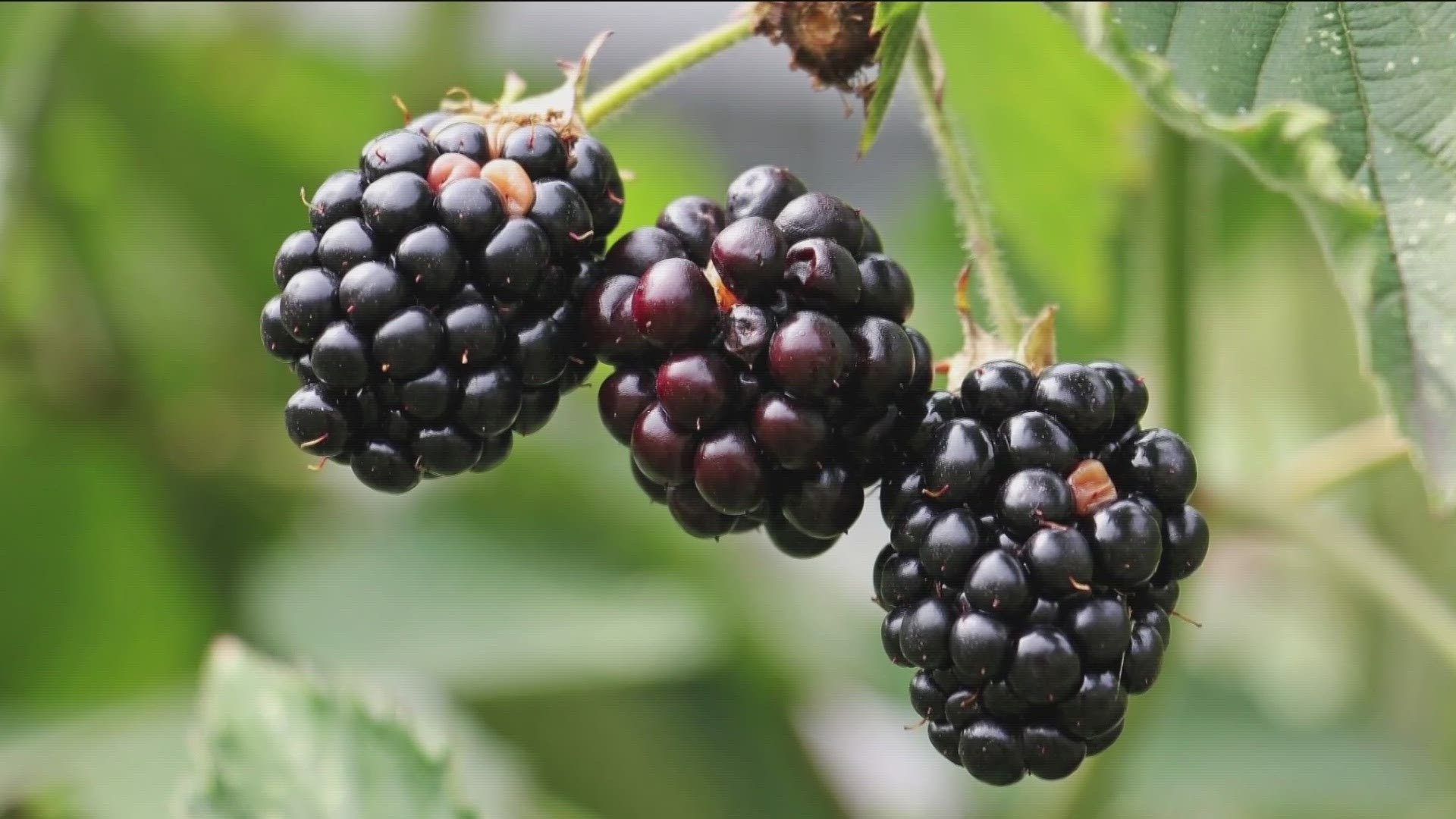BOISE, Idaho — They are a summertime favorite – those deliciously sweet and juicy berries that are so popular at farmers markets and in some of our home gardens, because you can enjoy them in so many different ways.
On this edition of You Can Grow It, KTVB Garden Master Jim Duthie clues us in on some of the many different kind of berries that grow wild in Idaho, and a few others that you may want to grow in your own garden at home.
Here's a salute to those smallest of fruits, the berries. These little bites of juicy summery goodness grow very well here in Idaho, and there are even some that are native to the Gem State, but you might be surprised to learn that some of them aren't actually berries at all.
Idaho is home to a variety of native edible berries that grow in the wild, including chokeberries, elderberries, serviceberries, gooseberries and wild currants.
However, none are as famous and versatile as the mountain huckleberry. In fact, it's Idaho's state fruit, and we're heading into the peak of huckleberry season. These succulent and sweet little berries grow wild throughout the intermountain region, and are a favorite for many wild animals and birds, including bears fattening up for winter hibernation.
They are very nutritious, loaded with antioxidants, high in iron and are a good source of Vitamin C and potassium. They are a favorite for jams, jellies, syrups, ice cream and a variety of other uses. Wild varieties are perennial and won't grow well in your home garden down in the warm valleys of southern Idaho, but there are some annual varieties that you can plant for a crop of berries that look and taste very much like the wild ones.
Blueberries grow almost anywhere in the United States, including Idaho, although they aren't know to grow wild. The plants like full sun and most, acidic soil, which can be a challenge in southwest Idaho where our soil is commonly alkaline. So, you have to use an acidic planting mix to grow them here.
Blueberries are also high in antioxidants and vitamins. The plump little berries grow on a fairly compact plant, so you don't need a lot of room, and they even do well in containers. Depending on the variety, they will ripen from June to September, and with proper care, the plants can continue to produce berries for up to 25 years or more.
Blackberries and raspberries, contrary to popular belief, are not really berries at all. True berries are simple fleshy fruits that form from the ovary of one flower, with seeds embedded in the flesh of the fruit. Blackberries and raspberries grow from a flower with multiple ovaries, and each one forms in a tiny individual fruit called a drupelet, which are those little round bumps on the berries, and each one contains a seed.
They are actually considered an aggregate fruit, but who cares? They are delicious and east to grow, and can even be grown together in the same patch, since they are self-pollinating, so cross-pollination isn't a concern. They prefer slightly acidic soil. The fruits grow on the ends of long canes that can be very thorny and scratchy, but area nurseries now carry thornless varieties.
These delicious berries are extremely versatile, made into jams, jellies, pies, syrups, wines and dozens of other products.
Finally, strawberries, which are one strange little fruit. Like blackberries and raspberries, strawberries have their seeds on the outside. The exact origin of the name is uncertain, but 'strawberry,' probably came from 'strewn berry,' because the plants' runner stray in all directions as if they have been strewn on the ground.
Strawberries are the perfect fruit plants for any beginner gardener. They are adapted to a wide-range of growing conditions, and can be grown in containers, hanging baskets, garden beds, or even as edible landscaping. The mother plant produces long stems called runners that will grow into new baby plants.
There are two main varieties of strawberries, ever-bearing plants produce two small crops, one in June and another in early fall. June-bearing strawberries are the most familiar type and produce the biggest fruits and the largest yields. Bring on the strawberry shortcake!
Whatever berry you prefer, whether it is considered a berry or not, it's the perfect small fruit plant for gardeners of all abilities, and You Can Grow It.
Here's something that will make you stop and think – while strawberries, raspberries and blackberries are not considered true berries, grapes and tomatoes actually are, because they form from a single-ovary flower, and there are multiple seeds contained in the fleshy fruit.
Now, here's another question to think about – is a tomato a fruit or a vegetable? Maybe KTVB will cover that on another You Can Grow It.
Watch more You Can Grow It:
See them all in our YouTube playlist here:
HERE ARE MORE WAYS TO GET NEWS FROM KTVB:
Download the KTVB News Mobile App
Apple iOS: Click here to download
Google Play: Click here to download
Stream Live for FREE on ROKU: Add the channel from the ROKU store or by searching 'KTVB'.
Stream Live for FREE on FIRE TV: Search ‘KTVB’ and click ‘Get’ to download.

